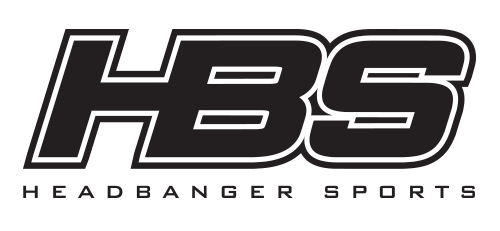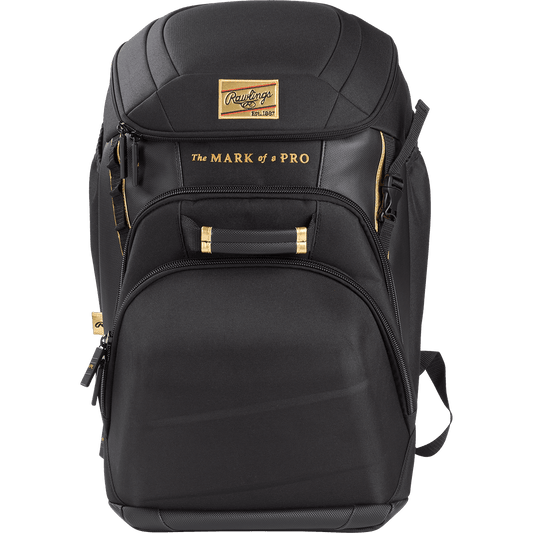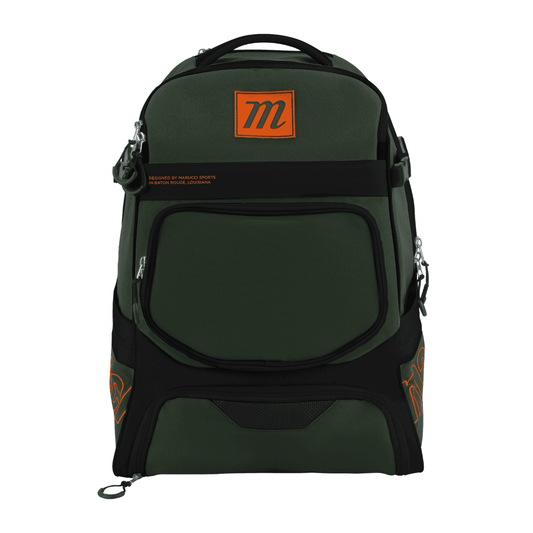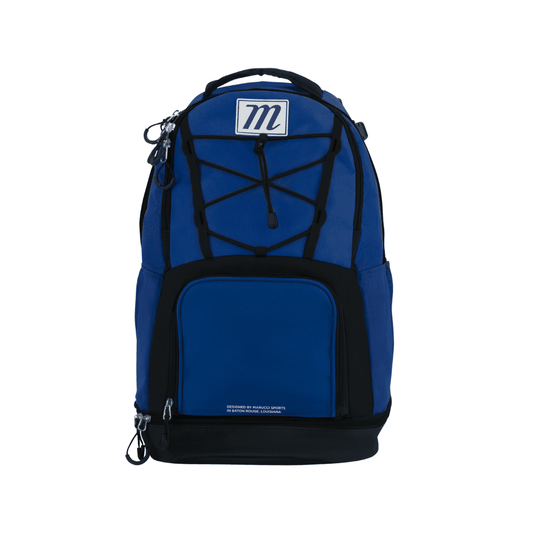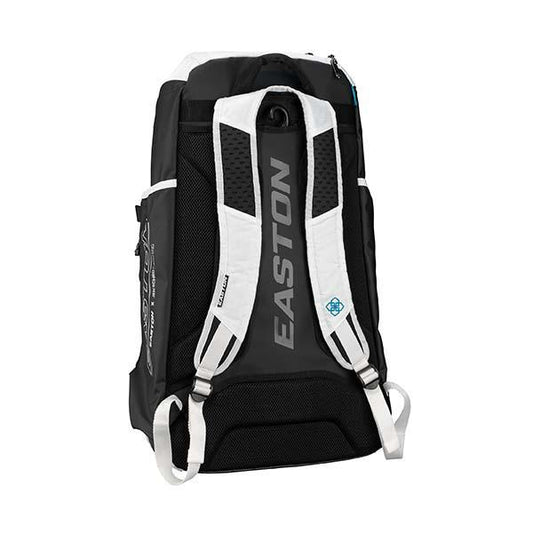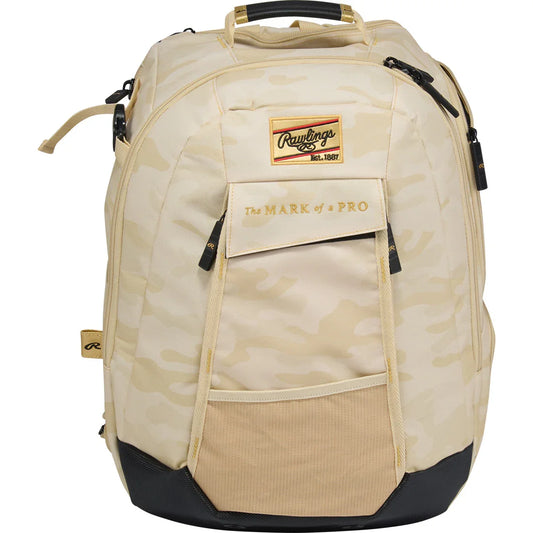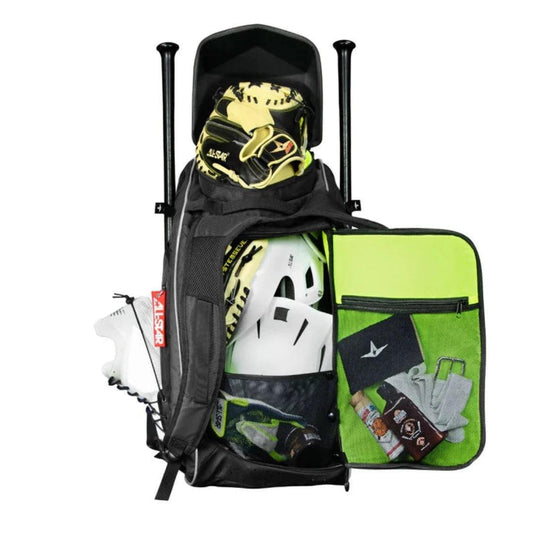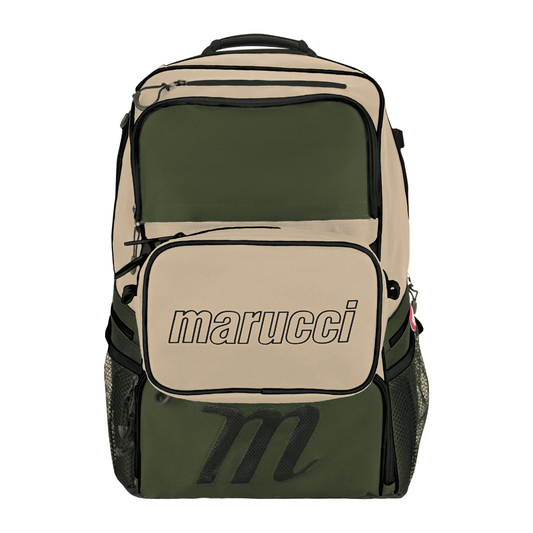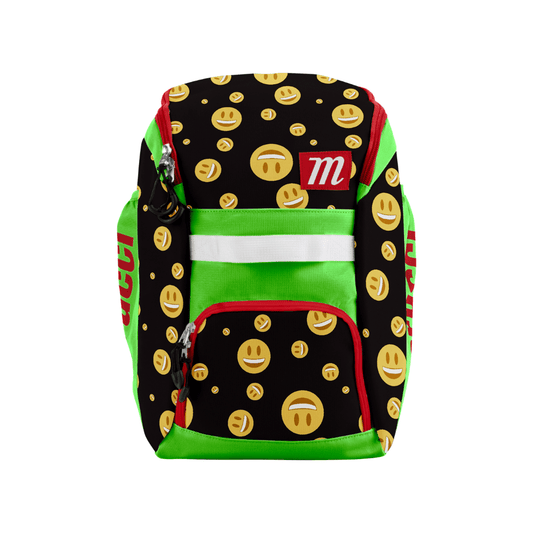Sports leagues and tournaments, along with the equipment that is permitted for use by players, are all severally regulated by a variety of governing bodies. A governing body, like, for example, the NSA, or National Softball Association, might prescribe rules for what bats and other pieces of gear players are allowed to use when in competitive play.
The NSA, however, is only one such example of a regulating or governing body. There are many others, and some of these prescribe their own rules for what bats and gear can or cannot be used.
If you play in a league or in tournaments that are regulated by the USSSA, this guide will attempt to streamline the process of selecting a fitting softball bat and the rules you must follow.
What is the USSSA?
One such body that governs softball (and other leagues) is the United States Specialty Sports Association or USSSA. Today, the USSSA governs many youth sports, including but not limited to fastpitch softball, baseball, and even basketball.
Originally, USSSA stood instead for the United States Slowpitch Softball Association, and its focus was on softball. While the organization has expanded its scope of influence, it still provides regulations for softball bats. If you play in a league that requires a USSSA softball certification, here is what you can expect.
To understand much of what is required by a USSSA softball stamp, you need to have a background understanding of the concept of BPF, or bat performance factor, so first we need to shed some light on that.
What is BPF?

When you take a softball and throw it against a flat, hard wall, some of that energy will be rebounded from the wall into the ball. As a result, the ball will not fall straight down along the wall but will bounce off of it and return towards the person who threw it.
Bat performance factor, or BPF, was developed using the rebound of a wall as a baseline. In this instance, we would say that the wall had a bat performance factor of exactly 1.0, imparting no additional rebound into the ball. Now, if we were to give that same wall a hypothetical BPF of 1.1, it would mean that the very same ball, when thrown against that wall with the same exact amount of force, would rebound back with an additional 10% of redirected energy or rebound.
In other words, if you throw the same ball at the same exact angle and speed against two different walls, one with a BPF of 1.0 and the other with a BPF of 1.1, the ball would bounce farther away off of the wall with the higher rebound (the one with the rating of 1.1).
This concept has been applied to the barrels of baseball and softball bats, with the basic significance meaning that the higher the BPF of the bat, the harder and farther batters will be able to hit the ball. Because the performance (among other specifications) of softball bats are strictly regulated by softball governing bodies, BPF is one of the central metrics weighed in certification.
On USSSA Softball Bat Regulations
With a basic understanding of what BPF means, we can proceed to an explanation of what the USSSA softball bat certification stamp really means.
As of 2016, in order to be legal for use in a USSSA league or tournament, bats must either be made of wood or bear the permanent USSSA mark on the taper of the bat.
There is a special dispensation for wood bats that allows them to be legal for play even when they do not bear the words “Official Softball.” In addition, wood bats are only legal if their barrel diameter is 2 ¼ inches or smaller.
For both slow pitch softball and fast pitch softball, the bat itself, regardless of what it is made from, must be no longer than 34 inches. In addition, the barrel may not exceed 2 ¼ inches at its widest point.
The USSSA currently certifies bats according to several different BPF ratings, primarily with ratings of 1.15, 1.2, and 1.21. However, 1.15 BPF bats are typically reserved for youth baseball and big barrel play, and so they are not relevant to those looking for a softball bat.
Most USSSA stamped bats intended for softball games and tournaments are going to have a BPF of 1.20, whether for fast pitch or slow pitch softball. Certified bats with a BPF of 1.21 are typically reserved for SSUSA (Senior League Softball) bats. In Senior League Softball, the extra rebound and performance are permitted.
That means that for slowpitch and fastpitch players, you’re going to be looking at bats with a BPF of 1.20. If you have met these requirements, you can be fairly confident that a softball bat is legal for play in a USSSA sanctioned league or tournament. If it’s stamped with the USSSA stamp, that’s your seal of approval - however, if you still need assistance ensuring a bat is legal for your intended purposes you can always give us a call at 1-888-540-BATS and we will be more than happy to help you out.
While this is a good jumping-off point for finding a new bat for the upcoming softball season, it is not the be-all and end-all of the process. Once you have ensured that the bat in question is legal for play, you’re only one small portion of the way to finding one that’s right for you.
It’s a good idea to start with the certification so you can narrow down the shopping process, but that is only the beginning. You still need to sift through the properly certified bats in order to find a model that is a good match for your height, strength, and skill set.
Length, Weight, and Weight-Drop
Length, weight, and weight drop will all impact the fitness of a bat, given the skill sets of a specific player. It has been specified that the USSSA does not permit bats to exceed 34 inches in length. Bats that exceed 31 ounces are also prohibited. However, this just sets the upper limits of the parameters. A 33-inch USSSA softball bat with a weight of 30 ounces might be categorically legal for your league, but at the same time might not compliment your skillset as you might hope.
In order to find a bat that is a good fit for you, you also need to take into account the length, weight, and weight drop, as these will impact the handling of the bat and how effective you are in practice or play with it.
The length of the bat will impact your ability to reach out over the plate, and together with the weight will affect the balance of the bat and how well it handles. All things being equal, a longer bat will give you better reach, and a heavier bat will enable you to drive more force behind the swing.
Together, the relationship between the bat’s length and weight results in a metric known as weight drop, weight drop is given as a number (usually negative) that is calculated by the bat’s length in inches minus the bat’s weight in ounces, usually presented as a negative number. The higher the weight drop, the lighter the bat will feel in the hands.
Bats with a high weight drop are called balanced bats and they are generally very responsive in the hands. These bats are usually easier to control with a very fine degree of precision and accuracy. Precision hitters usually love their responsiveness and the greater control they can exert over them through the swing.
On the other hand are bats with a heavy weight drop. These bats are called end-loaded bats for what we can only assume are self-explanatory reasons. When you handle an end-loaded bat, you’ll feel as though you’re swinging a heavier bat. In fact, two bats can both weigh 24 ounces, but the end-loaded bat will feel heavier by comparison.
End-loaded bats are preferable for power hitters who like to deliver their all into every swing. What’s best for you will require a little bit of reflection on your preferences, strengths, and weaknesses. No two players have the same needs in a bat, and the only experience will tell you for sure what weight drop is ideal for you.
The Old Fashioned Way
That being said, there are still old-fashioned methods for determining whether a bat’s length and weight are suitable for a given player. To check the fitness of a bat’s length and weight, only follow some of the following procedures.
There’s more than one way to check to see if a USSSA softball bat is sized appropriately for your use. One way is to stand upright and place the knob of the bat in the middle of your chest. With the bat parallel to the ground, you should just be able to reach the end of the barrel with your fingertips. Any longer, the bat might feel too ungainly. Shorter, and you might wish you had extra reach.
Another way you can check a bat for appropriate length is as follows. Standing upright, place the end of the barrel of the bat against the ground, adjacent to your leg and rising up the side of it. If the knob of the bat reaches to about your hip, it’s probably sized appropriately.
As for weight, you need to check to be sure that you have sufficient strength to swing the bat. Bats that are too light won’t enable you to drive adequate power through your swing; bats that are heavy will frustrate you, be difficult to control, and will fatigue you prematurely.
One way to check a bat’s weight is to grasp it firmly by the end of the grip near the knob and extend it forward in front of your body until the barrel is parallel with the ground. If you can hold this position for a minimum of 30 seconds then the bat is probably weighted appropriately for your strength, but this is a conservative estimate. It’s best if you can hold that same position for 45 seconds. If you can hold it for a minute without excessive fatigue, you will probably be able to wield the bat very effectively, and with great control.
You can also try this basic test but by holding the bat out to the side of the body. However, you won’t need to hold the pose for as long. Additionally, you can get a rough estimate of what size and weight you should be looking for by using a bat chart.
Using a Bat Chart
If you’d prefer to start your search with a bat size chart, this can help you narrow down the bats you should be looking for, at least in terms of length. Taking into account your height and weight (which should give at least a rough estimate of your strength) you can start here. Consult the following bat size chart for reference:

For example, if you’re 68 inches tall (that’s nearly 6 feet) and weigh 170 pounds, a 33-inch bat is probably a good size for you to start out with. If you find that a slightly short bat is preferable that’s up to you, but this gives you a good baseline to start out from through which you can key in on your preferences in weight and balance.
Call Us for Additional Help!
You can find that bat size chart at the previous link where you’ll also find other bat sizing resources. That will give you a jumping-off point for selecting the right softball bat for your league and strengths.
However, selecting a bat is a highly personal process, and if you feel that you need additional help or would like some personalized advice or recommendations, don’t be shy about reaching out to us for help.
You can get in touch with us at 1-888-540-BATS. Give us a call, let us know about the leagues or tournaments in which you compete, and we’ll help you identify a bat that is not only qualified for your purposes but also compliments your skillset directly.
